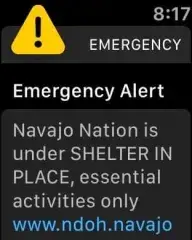Our nation is a melting pot of diverse perspectives and backgrounds, but its origins are rooted in the First Nations, now recognized as comprising the 578 federally recognized Native Alaskan Village and American Indian Tribal governments. The Department of Homeland Security Science and Technology Directorate (S&T) is proud to announce the creation of a Tribal Community Affairs Initiative, which will enhance our ability to strategically support a critical White House priority, and which builds upon S&T’s regular, meaningful, and robust consultation with the Tribal Nations.
S&T has a long history of gathering input from and collaborating with local, tribal, territorial, state, and federal first responders and other partners to engage them in all stages of research and development—from building prototypes to operational testing to transitioning the tools that enhance safety and performance in the field. By establishing this new initiative, S&T is strengthening our government-to-government relationships, communications, and mutual cooperation among S&T, the Department and Tribal Nations.
In January of this year, I was honored to attend an inauguration ceremony celebrating new leadership of the Navajo Nation. The highlights were the swearing in of Buu Nygren, who at 36 is the youngest-serving president of the Navajo Nation, and Richelle Montoya, the first female Vice President to serve. The event also included the swearing in of the 25th Navajo Nation Council, nearly a third of which are women. Cathi Cross, our new Tribal Community Affairs Director, also joined me on this informative trip to Fort Defiance and Window Rock, Arizona, where we met representatives of Diné College and Navajo Technical University to discuss wide-ranging topics including innovation, STEM, cybersecurity, broadband, water security and training first responders on the reservation.
The visit afforded an excellent opportunity for us to listen and learn to gain a better understanding of the challenges facing the Navajo Nation and their unique research and technology needs, so we can help inform the Department’s thinking about how best to support their efforts. A severe lack of fresh water looms high among the concerns for this long under-served community, which occupies the largest expanse of land of any indigenous tribe. The Navajo Nation, stretching 27,000 miles across parts of Arizona, New Mexico, and Utah, is home to approximately 174,000 Navajo people. The U.S. total population of the tribe is nearly 400,000. A key take-away of this visit for me is the importance of ensuring that tribal equities are brought to the table and considered in Department discussions about balancing priorities. We appreciate the efforts of S&T’s liaison on the Council, Laurel Iron Cloud, Office of Partnership and Engagement, who helped coordinate and support our visit to the Navajo Nation.
Our ongoing commitment to tribal community engagement is also evident within our First Responder Resource Group (FFRG), an all-volunteer working group that that helps S&T maintain focus on the top-priority needs of responders in the field. Shannon Buhl, Director of the Cherokee Nation Marshal Service, is a long-standing FRRG member who represents tribal law enforcement and first responders contributing to the FRRG insights on the many logistical and technical challenges fellow responders in his department face on a daily basis.

During the pandemic, S&T and partners at FEMA worked with tribal partners to ensure that critical public health messaging was accessible to all. The Navajo Nation became the first tribal nation to send a Wireless Emergency Alert; in the time since, tribal feedback was critical to development of the Alerts, Warnings, and Notifications Program Planning Toolkit. The toolkit was designed with input from federal, state, local, tribal, and territorial entities to aid authorities across the U.S. with creating robust alerting programs.
These are but a few examples of how we have supported and engaged with our tribal partners in recent months and years. We are committed to expanding these relationships and related opportunities for research, development, testing, and evaluation. For the Tribal Community Affairs Initiative to succeed, I knew it needed dedicated leadership. I established a new Director of Tribal Community Affairs role, now held by S&T Executive Director and Senior Advisor Cathi Cross, to further enhance S&T’s focus and consultation with the federally recognized Native Alaskan Village and American Indian Tribal governments, and to serve as a foundation for collaboration and consultation related to S&T’s mission.
Cathi and I are excited to expand our collaborative efforts with our partners in tribal government. We look forward to working together to build meaningful solutions that enable tribes to improve their communities and quality of life.
For more information or related media inquiries, contact STMedia@hq.dhs.gov.

